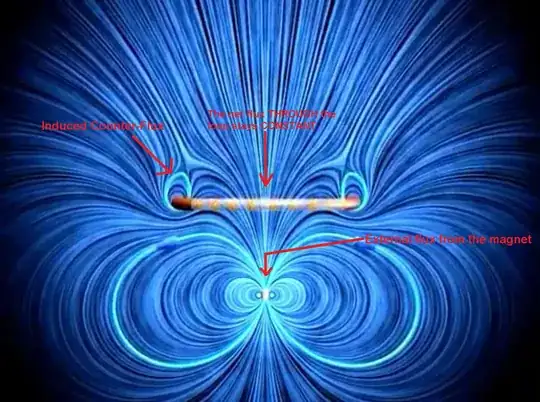Ohm's law in the form
$$
I = \frac{V}{R}
$$
where $V$ is voltage between two points, is merely a special case of general Ohm's law applicable only to situations where all electromotive forces active in the metal conductor are due to electrostatic field. This is not the case here, as the current is not due to electrostatic field, but due to special electromotive force of the conductor itself acting on the mobile charges forming the current, called motional EMF. It appears whenever conductor moves in magnetic field.
General Ohm's law (ignoring magnetic forces) is
$$
\mathbf E + \mathbf E^* = \sigma \mathbf j
$$
where $\mathbf E$ is total electric field, $\mathbf E^*$ is total non-electric force per unit charge (in this case, force due to the wire moving in magnetic field).
We can integrate both sides of the general Ohm's law for some segment of the circuit in the following way:
$$
\int_{start~of~s}^{end~of~s} (\mathbf E + \mathbf E^*) \cdot d\mathbf s = \int_{start~of~s}^{end~of~s} \sigma \mathbf j \cdot d\mathbf s
$$
The left-hand side is called total electromotive force for segment $s$ and we can denote it $\mathscr{E}_s$.
If we imagine the circuit wire is torus of cross-section area $A$ and length $L$, we can do the integration over the whole closed circuit, and then we get
$$
\mathscr{E}_{circuit} = \frac{\sigma A}{L} I.
$$
We know from high school that ohmic resistance of circuit is
$$
R = \frac{\sigma A}{L}
$$
so we finally arrive at the equation
$$
\mathscr{E}_{circuit} = RI.
$$
This is the other (integral) form of the general Ohm's law.

